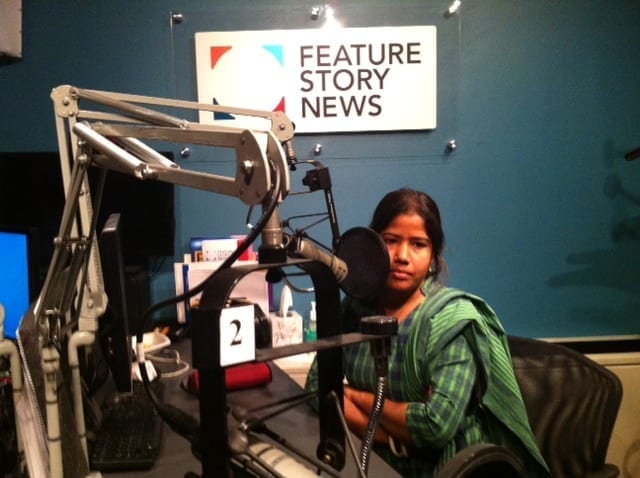CHITTAGONG, BANGLADESH—In this coastal city of 6.5 million people, the second center of garment production in Bangladesh after the capital, Dhaka, a re-energized labor movement is making real progress in organizing workers. At a Solidarity Center training program for two trade union federations, 12 young organizers—most on the job for less than six months—were advancing beyond the basics of organizing and moving up the knowledge ladder fast.
It helped that two other attendees—Nomita, president of the Bangladesh Independent Garment Workers Union Federation (BIGUF), and her colleague, Chandon, BIGUF vice president, joined the training to support and inspire. Between them, they have two decades of experience organizing in a hostile environment, and have been instrumental in guiding the new activists into a ramped up, more strategic form of organizing.
This was not their first training program, and the organizers were delving into more sophisticated material, including chapter and verse on labor law, organizing women workers, developing leaders and representative unions, incorporating new tactics into campaigns and how to interview workers to document the unfair labor practices (including sexual harassment, firings, threats and violence) that they and their colleagues are facing on a daily basis.
Since the Tazreen Fashions factory fire of November 2013 through the end of May 2014, several independent unions including BIGUF and the Bangladesh Garment Workers Independent Federation (BGIWF), also represented at this training, have organized 251 unions, with 166 achieving registration, a government requirement. In all, the factory unions represent 75,000 workers. In Chittagong alone during this period, workers organized 45 unions with 34 gaining registration—a 79 percent success rate.
But organizing and registration is just the beginning for these brave workers. The next step is employer recognition. After that, unions will present a charter of demands (which might include items taken for granted in the West, such as payment of the minimum and overtime wages, and improved factory safety) to management to form the basis for collective bargaining. Then, hopefully, negotiations. Each step is difficult, but these new organizers are well aware how critical these benchmarks are to the lives and livelihoods of Bangladesh garment workers.

